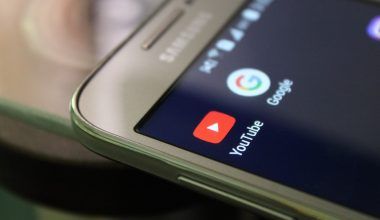Music has always been a powerful way for people to express themselves. It’s a medium that captures emotions, tells stories, and brings people together. But over time, certain songs and albums have sparked controversy because of their language or themes. This is where the parental advisory explicit content for music comes in.
Have you ever wondered how this label became such an integral part of the music industry? It’s a familiar sight on album covers and streaming platforms, but its history and purpose are worth exploring. Let’s take a closer look.
The Origin of the Parental Advisory Label
The “Parental Advisory” label wasn’t always a part of music culture. Its journey began in the 1980s when music was evolving rapidly. Genres like rap, hip-hop, and heavy metal were rising in popularity. Many of these songs contained strong language or discussed mature topics like politics, drugs, and relationships.
This didn’t sit well with everyone. Concerned parents and advocacy groups began pushing for a way to warn listeners about explicit content in music. The conversation gained momentum when high-profile musicians released controversial albums that made headlines for their lyrics.
The tipping point came when a group called the Parents Music Resource Center (PMRC) led a campaign to introduce a system that could inform parents about potentially inappropriate music. In 1985, the Recording Industry Association of America (RIAA) agreed to add a warning label to certain albums. This label eventually evolved into the “Parental Advisory Explicit Content” sticker we see today.
Why Is the Label Important?
The “Parental Advisory” label is more than just a sticker; it’s a tool for transparency. It helps parents and listeners make informed choices about what they or their children are consuming. When you see that label on an album, it’s a clear signal that the music may contain strong language or themes not suitable for younger audiences.
At the same time, the label also represents freedom of expression for artists. Musicians use their work to share their unfiltered thoughts and emotions. The label ensures that they can do so without censorship while giving listeners a heads-up about the content.
How Has It Impacted the Music Industry?
Over the years, the “Parental Advisory Explicit Content” label has had a significant impact on the music industry. Some artists see it as a badge of honor, signaling that their work is raw and authentic. For others, it’s a barrier that limits their audience.
The label has also influenced marketing and sales. For instance, certain retailers refuse to carry albums with the sticker, while streaming platforms use it to categorize songs. Despite these challenges, many artists embrace the label as a way to connect with their audience on a deeper level.
Interestingly, the label has also sparked debates about censorship and creativity. Critics argue that it unfairly targets certain genres, like rap and hip-hop, while supporters believe it’s a necessary tool for protecting younger listeners.
The Role of Streaming Platforms
In today’s digital age, music consumption has shifted dramatically. Streaming platforms like Spotify, Apple Music, and YouTube have become the primary way people listen to music. These platforms use the “Parental Advisory” label to help users filter content.
For example, many platforms allow users to set parental controls that block explicit songs. This makes it easier for parents to monitor what their children are listening to without limiting access to the entire library. The label also helps listeners decide if a song fits their mood or environment.
The Controversy Around the Label
Despite its benefits, the “Parental Advisory” label hasn’t been free from criticism. Some people believe it’s a form of censorship that stifles artistic expression. They argue that music should be judged on its merit, not its language or themes.
Others point out that the label can create stigma around certain genres or artists. For instance, rap and hip-hop artists are often labeled more frequently than artists from other genres, leading to perceptions of bias.
On the flip side, supporters of the label argue that it’s not about censorship but about providing information. They believe it empowers listeners to make choices that align with their values and preferences.
How Parents Can Use the Label
For parents, the “Parental Advisory Explicit Content” label can be a helpful resource. It’s not about shielding kids from every challenging topic but about knowing what they’re being exposed to. Here are some tips for using the label effectively:
- Have open conversations: Talk to your kids about why certain songs have explicit labels and what those themes mean.
- Use parental controls: Many streaming platforms offer tools to block explicit content.
- Set age-appropriate boundaries: Decide what’s suitable for your child based on their age and maturity level.
The Future of Explicit Content Labels
As the music industry continues to evolve, so will the use of the “Parental Advisory” label. With advancements in technology, we may see more sophisticated ways to categorize and filter content. For example, AI could analyze lyrics to provide detailed descriptions of a song’s themes.
At the same time, the label’s core purpose will remain the same: to balance artistic freedom with consumer awareness. By understanding its history and impact, we can appreciate its role in the ever-changing world of music.
Final Thoughts
The parental advisory explicit content for music is more than just a warning. It’s a reflection of the dynamic relationship between art, society, and personal choice. Whether you’re a parent, a music lover, or an artist, this label plays a role in shaping how we experience music.
So, the next time you see that familiar black-and-white sticker, take a moment to think about its significance. It’s not just about words; it’s about what those words represent and how they connect us all.
For further reading, explore these related articles:
- How Do I Put My Music on iPhone? A Complete Guide for Music Lovers
- What is a Spotify Artist ID and Why Does It Matter?
For additional resources on music marketing and distribution, visit DMT Records Private Limited.






